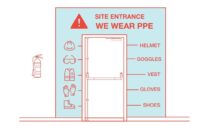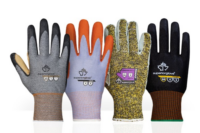No safety technology is changing as fast as that employed in PPE. The devices of just a few years ago are now obsolete by replacements that are lighter, easier to use, and more protective. These resources alert you to developments in the field, and equally important, supply training ideas to get your workers to use their PPE, and use it correctly.
Free Special Report: Does Your PPE Program Meet OSHA’s Requirements?
Back to Basics is a weekly feature that highlights important but possibly overlooked information that any EHS professional should know. This week, we examine how to comply with hearing conservation requirements. Do you have a hearing conservation program in place to protect your employees from workplace noise exposure? Are you taking the necessary steps to prevent […]
By Superior Glove, leading safety glove innovator Did you know that small changes “nudges” in the environment can influence safer decisions and promote positive behavior? This theory is a concept in behavioral science that proposes subtle, indirect suggestions can effectively influence the behavior and decision-making processes of individuals and groups. By making slight tweaks to […]
In this installment of EHSDA Shorts, Derek Sang, Senior Technical Training Manager at Bulwark Protection, explains why professionals should wear flame retardant clothing in hazardous workplaces.
By: Superior Glove, leading safety glove innovator Glove gauge is a commonly used term to classify knit safety gloves. From cotton to nylon to aramids, string knit gloves typically range from 7-gauge to 21-gauge and offer varying degrees of hazard protection. But what is glove gauge and how does it affect glove performance? What is […]
In this installment of EHSDA Shorts, Jennifer Hsu, MPH, CSP Senior Leader in Environmental, Health, and Safety (EHS) | Certified Safety Professional (CSP), shares her thoughts on ordering personal protective equipment (PPE) for women. This clip was taken from a webinar titled “Creating an Inclusive PPE Program: Connected Tech, the Right Fit, and Change Management.” […]
In cases where Legionella hazards can’t be controlled with engineering and administrative controls, personal protective equipment (PPE) may be needed to prevent worker exposures and infections. Here’s what you need to know about how to protect workers against Legionella exposure with PPE.
On episode 202 of EHS On Tap, Cam Mackey, President and CEO of the International Safety Equipment Association, and Ray Chishti, Senior EHS Editor with J.J. Keller, talk about clearing up the confusion about worker head protection.
OSHA provides PPE enforcement guidance (CPL 02-01-050) that outlines its interpretations of its general industry PPE standards (29 Code of Federal Regulations Part 1910, Subpart I) and procedures for enforcing them. Here’s what you need to know about PPE enforcement procedures.
Back to Basics is a weekly feature that highlights important but possibly overlooked information that any EHS professional should know. This week, we examine OSHA’s requirements for personal protective equipment. When engineering controls, administrative controls, and work practices aren’t enough to protect your employees from exposures to a safety or health hazard, you have to provide […]
Head protection for employees is an essential part of workplace safety. Here’s what you need to know about storage of head protection such as safety helmets.










